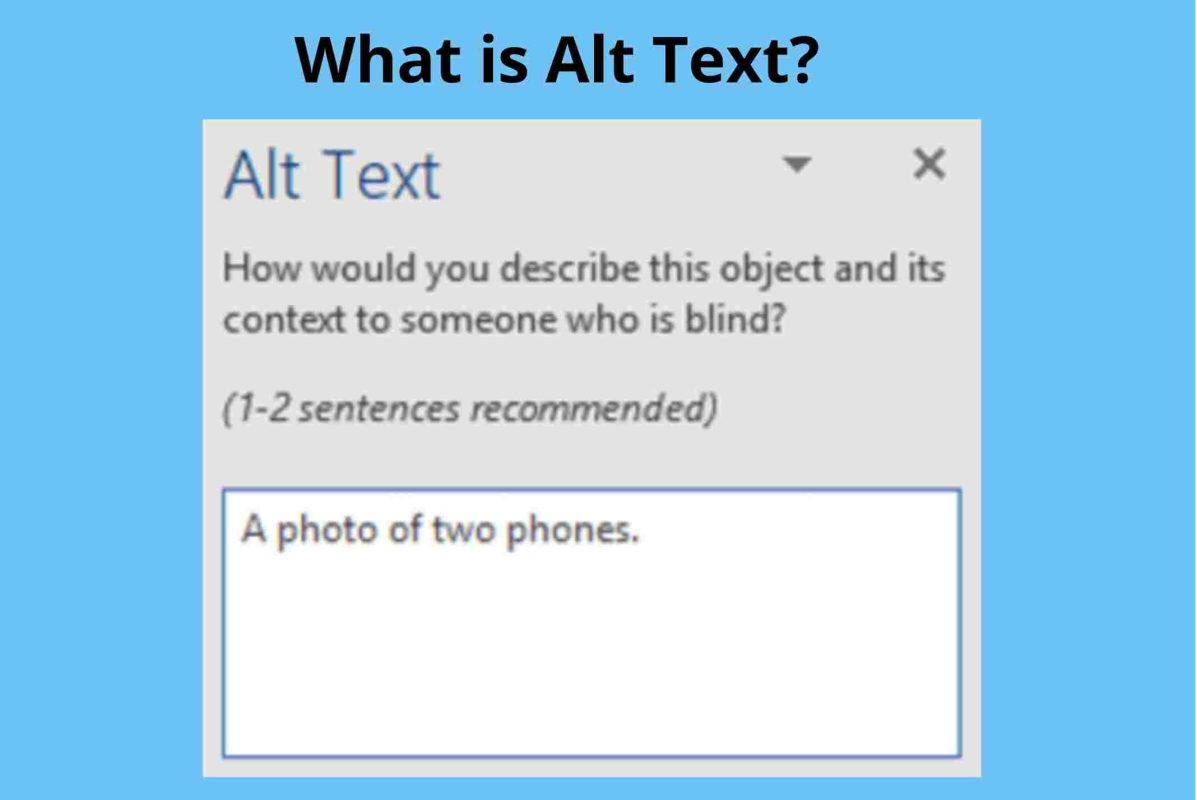Alt text (alternative text), also called as “alt attributes,” “alt descriptions,” or technically as “alt tags,” are used within an HTML code to describe the appearance and function of an image on a page/post/article.
Looking to drive consistent traffic to their site, image SEO has once again become a viable option because it improves the on-page optimization for your keyword targets as well as creating a new traffic opportunity if it’s been a while since you brushed up on your SEO ranking factors.
Alt attributes (aka alt tags) are short descriptions of about 100 characters that websites can attach to any image on their website. They are also apparent on mouse hovers whenever an image is unable to load.
If you’ve used WordPress, you may have noticed that adding any new media prompts a dialogue box with a field for including new alt text.
Importance of Alt Text
Adding alternative text (Alt text) to images is, first and foremost, a principle of web accessibility. Visually impaired users using screen readers will be read an alt attribute to understand an on-page image better.
Alt tags will be presented in place of an image if an image file cannot be loaded.
Alt tags give better image context/descriptions to search engine crawlers, supporting them to index an image quickly and adequately.
Google has gotten quite good at managing the value and importance of content for its users. As good as it is, the fact is that Google is still a machine and requires help from humans to understand visual elements.
Google uses alt text in the same direction that the visually impaired use them — as a way to contain images because the algorithm cannot see nor cognitively understand pictures.
Implementing an alt attribute on an image assists Google in understanding what an image is about to serve it in image results.
Image Search Engine Optimization (SEO)
Using alt text on your images can perform for better user experience, but it may also serve to earn you both explicit and implicit SEO benefits. Along with implementing image title and file naming best practices, including alt text, may also contribute to image SEO.
While search engine image identification technology has vastly improved over the years, search crawlers still can’t “see” the images on a website page as we can, so it’s not wise to leave the interpretation individually in their hands. If they don’t understand or get it wrong, it’s possible you could see both ranks for unintended keywords or miss out on ranking altogether.
Alt-tags is, first and foremost, created to provide text displays of images for users who are incapable of seeing them. If an image truly doesn’t convey any meaning/value and is just there for design purposes, it should live within the CSS, not HTML.
Keywords Texting: Google won’t dock you points for inadequately written alt text, but you’ll be in problem if you use your alt text as an opportunity to stuff as many relevant keywords as you can think of into it. Focus on writing clear alt text that provides context to the image and, if possible, includes your target keyword, and leave it at that.
Search engines use several circumstances to judge how important a web page is for users. One of those factors is the image alt tags, and with the changes to Google Image Search through the years, websites have the potential to drive severe traffic through the use of right image SEO.
